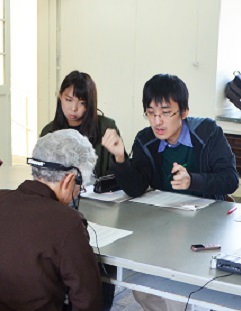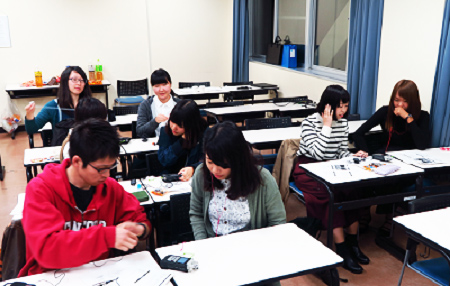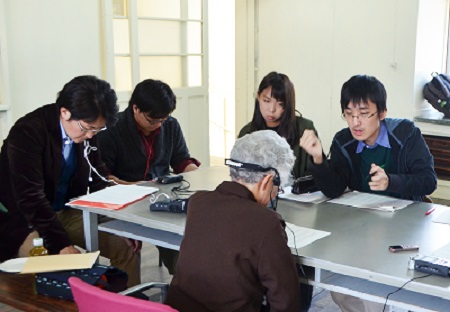Reformation of Local Community through Recordings and Researches of Dialects

HARADA Souichiro
Project Assistant Prof., Center for Transdisciplinary Innovation, NIHU
With advances in science and technology, human society has undergone huge changes. Language is no exception. In fact, it is claimed that the number of languages spoken in the world will be halved by the end of the 21st century. It may be difficult to imagine that languages will become extinct, but this claim may be more understandable if we replace the word “languages” with “dialects.” I suspect that most of us would say that the language we speak now is clearly different from the language our grandparents spoke (or speak). In this sense, it is conceivable that regional dialects are, to a greater or less degree, in danger of extinction. The National Institute for Japanese Language and Linguistics (NINJAL) is engaged in activities to make recordings of such dialects in the research unit entitled “Reformation of Local Community through Recordings and Researches of Dialects” which forms part of the Multidisciplinary Collaborative Projects - NIHU Transdisciplinary Project between NIHU and NINJAL called “Change of Local Communities and Reconstruction of Community Cultures after Disasters in Japanese Archipelago.”
Research into dialects is necessary to clarify the historical development of the Japanese language, among other reasons. However, this is not only an academic imperative. Local people also often express the view that they would like to make recordings of their dialect. It is the universities in the region that are the first to hear these views. However, the universities do not necessarily have the knowhow to make recordings of dialects, and it is fair to say that there is a high level of demand for such knowledge and technology. NINJAL is, therefore, trying to transfer its knowhow to regional universities and increase activities to make recordings of dialects.
As part of these activities, last year NINJAL conducted a survey in Okinoshima-cho, Shimane Prefecture in collaboration with Shimane University’s Faculty of Law and Literature. Eight students from Shimane University and three graduate students from other universities took part in the survey. Since most of the students had no experience of a dialect survey, NINJAL provided preliminary training before embarking on the survey. In this preliminary training, researchers from the Research Institute for Languages and Cultures of Asia and Africa of Tokyo University of Foreign Studies and NINJAL delivered a short course on survey methods. This was the first time Tokyo research institutes and regional university had teamed up to conduct a survey in this way. In the actual field survey, the students took an active part in gathering 600 dialect words and data on accent and verb inflection. NINJAL plans to continue making recordings of dialects and contributing to educational activities at universities all over Japan through similar activities in the future.

Students from Shimane University listening to recordings they had gathered in the preliminary training

Researchers and students asking participants questions in the Okinoshima survey
